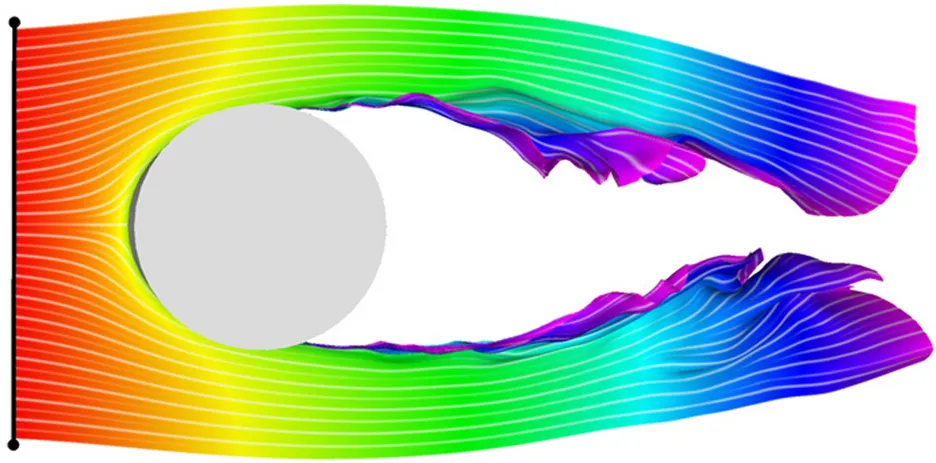Interactive Streak Surface Visualization on the GPU
Kai Bürger, Florian Ferstl, Holger Theisel, Rüdiger Westermann
Computer Graphics and Visualization Group, Technische Universität München
*Visual Computing Group, University of Magdeburg, Germany

Background
In this paper we present techniques for the visualization of unsteady flows using streak surfaces, which allow for the first time an adaptive integration and rendering of such surfaces in real-time. The techniques consist of two main components, which are both realized on the GPU to exploit computational and bandwidth capacities for numerical particle integration and to minimize bandwidth requirements in the rendering of the surface. In the construction stage, an adaptive surface representation is generated. Surface refinement and coarsening strategies are based on local surface properties like distortion and curvature. We compare two different methods to generate a streak surface: a) by computing a patch-based surface representation that avoids any interdependence between patches, and b) by computing a particle-based surface representation including particle connectivity, and by updating this connectivity during particle refinement and coarsening. In the rendering stage, the surface is either rendered as a set of quadrilateral surface patches using high-quality point-based approaches, or a surface triangulation is built in turn from the given particle connectivity and the resulting triangle mesh is rendered. We perform a comparative study of the proposed techniques with respect to surface quality, visual quality and performance by visualizing streak surfaces in real flows using different rendering options.
Associated publications
Interactive Streak Surface Visualization on the GPU
K. Bürger, F. Ferstl, H. Theisel, R. Westermann
IEEE Transactions on Visualization and Computer Graphics
(Proceedings of IEEE Visualization 2009)
[Bibtex][PDF]